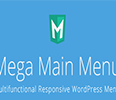The Art of Web Design: Enhancing Your Writing Brand Online

Welcome to the exciting world of web design, where creativity meets functionality, and your writing brand can truly shine online. In this article, we'll explore the importance of web design for writers and uncover the secrets to creating an engaging and visually appealing website that captivates your audience. So, get ready to dive into the digital realm and take your writing brand to new heights!
Why Web Design Matters for Writers
In a vast sea of websites, standing out is essential. Your website serves as the virtual storefront for your writing brand, the first impression your readers and potential clients will have. And let's face it, first impressions matter. So, imagine this: You stumble upon two websites offering writing services. One is a cluttered mess with an outdated design and poor navigation, while the other is sleek, easy to navigate, and visually appealing. Which one would you trust with your writing needs? The answer is clear.
A well-designed website instills confidence, establishes credibility, and sets you apart from the competition. It's a reflection of your professionalism and attention to detail. So, if you want to make a strong impression and attract your target audience, investing in web design is a no-brainer. Additionally, featuring a section dedicated to exclusive papers can further enhance your website's appeal and demonstrate the unique value you provide to your clients.
Creating a Seamless User Experience
When designing your website, it's crucial to put yourself in the shoes of your visitors. User experience (UX) design focuses on creating a seamless and enjoyable journey for your users. It's all about making it easy for them to find what they're looking for and ensuring they have a positive interaction with your site.
Intuitive navigation, clear call-to-action buttons, and easy-to-read content are the key ingredients of a great user experience. Remember, the longer it takes for visitors to find what they want, the more likely they are to give up and leave. So, make it a priority to create a user-friendly website that keeps your audience engaged and satisfied.
The Power of Responsive Design
In the age of smartphones and tablets, ensuring your website is mobile-friendly is non-negotiable. Responsive design allows your website to adapt seamlessly to different screen sizes, providing an optimal viewing experience across devices. And here's a staggering fact: 53% of website traffic worldwide comes from mobile devices. That's a huge chunk of potential readers and clients you don't want to miss out on!
So, embrace the power of responsive design and make sure your website looks great and functions flawlessly on mobile. It's a game-changer when it comes to reaching and engaging with your audience.
Choosing the Right Typography and Colors
Choosing the right typography is like selecting the perfect pen to write with—it sets the tone and personality of your writing brand. Fonts can evoke emotions, convey professionalism, or add a touch of playfulness. By carefully selecting fonts that align with your brand's voice and style, you can enhance the impact of your written content.
In addition to typography, colors play a crucial role in web design. They have the power to evoke emotions, create visual interest, and guide your audience's attention. Color theory is your secret weapon here. By strategically incorporating colors into your website, you can influence how your audience perceives your writing brand. It's like painting a canvas with emotions!
Consistency and Branding
Building a strong writing brand online requires consistency in design and messaging. Your website should reflect your brand's identity and create a seamless experience across all touchpoints. Consistency breeds recognition and fosters trust. So, ask yourself: Does your website align with your existing branding elements, such as your logo, color scheme, and overall style? Make sure your website is a true reflection of your brand's personality and values.
Smooth Navigation for Happy Visitors
Smooth navigation is the GPS that helps visitors find what they're looking for on your website. Just like getting lost in a maze is frustrating, a poorly structured website will quickly drive users away. So, make sure your navigation menu is easily accessible and logically organized. Avoid overwhelming visitors with too many options and instead guide them through a well-defined site structure. Happy visitors are more likely to stay longer and engage more with your content.
Driving Action with Calls to Action
Your website should be more than just a pretty face—it should be a powerful tool that drives action. Calls to action (CTAs) are the signposts that guide visitors towards the desired outcome. Craft compelling CTAs that grab attention and entice visitors to take action. Whether it's subscribing to your newsletter, contacting you for a writing project, or purchasing your latest book, make it clear and irresistible. Place the CTAs strategically throughout your website to maximize conversions and turn visitors into loyal fans.
Speed and Performance for the Need for Speed Generation
In a fast-paced digital world, speed matters. Slow-loading websites can be frustrating and often lead to high bounce rates. Your audience expects instant gratification, and if your website fails to deliver, they'll quickly move on to a faster alternative. So, optimize your website's speed and performance. Compress images, minimize code, and leverage caching techniques. A zippy website not only enhances the user experience but also plays a crucial role in search engine optimization (SEO). Search engines prioritize fast-loading websites in their rankings, so it's a win-win situation!
Embracing SEO Best Practices
Ah, the mighty SEO—a realm of mystery and intrigue. But fear not! Understanding and implementing SEO best practices is essential for your writing brand's online visibility. Ensure your website is search engine friendly by using descriptive page titles, incorporating relevant keywords into your content, and creating a logical URL structure. Conduct keyword research to uncover the phrases and terms your target audience is searching for, and strategically integrate them into your website's content. It's all about making sure your website gets the attention it deserves from search engines and users alike.
Harnessing the Power of Social Media
In today's interconnected world, social media is a powerful tool for expanding your writing brand's reach. Integrating social media into your website allows visitors to easily follow, share, and engage with your content across various platforms. Add social media sharing buttons to your blog posts, display your social media feeds on your website, or create interactive elements that encourage visitors to connect with you on their preferred platforms. Social media integration enhances your brand's online presence and fosters a sense of community among your readers.
Accessibility and Inclusive Design
Every individual, regardless of ability, should have equal access to your website and its content. Web accessibility is not just a legal obligation, it is also a moral duty.. Take the time to ensure your website is accessible by implementing features such as alt text for images, descriptive link text, and keyboard navigation support. By embracing inclusive design principles, you open your writing brand to a wider audience and demonstrate your commitment to inclusivity.
Testing, Feedback, and Continuous Improvement
Remember, Rome wasn't built in a day, and neither is a perfect website. Testing and iteration are crucial steps in the web design process. Launching your website is just the beginning; gathering user feedback, analyzing data, and making iterative improvements will help you create a website that continuously evolves and meets the changing needs of your audience.
Seek feedback from users, conduct A/B tests to compare different design elements, and monitor website analytics to gain insights into user behavior. Embrace the mindset of constant improvement, and your website will thrive.
In Conclusion
Web design is an art form that can elevate your writing brand to new heights in the digital realm. By understanding the principles of user experience, mobile optimization, typography, color theory, and SEO, you can create a website that captivates your audience, reinforces your brand's identity, and drives action.
Remember, your website is not merely a platform for showcasing your writing—it's a gateway to forging connections, building trust, and expanding your reach. So, unleash your creativity, embrace the power of web design, and watch your writing brand flourish in the vast online landscape. Your words deserve a beautiful stage, and the art of web design is the key to unlocking its full potential.

















